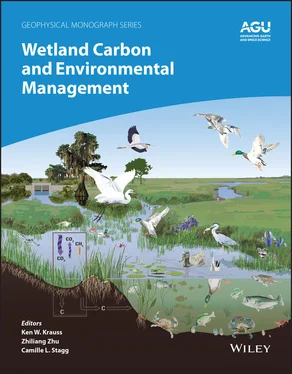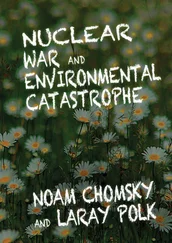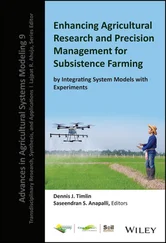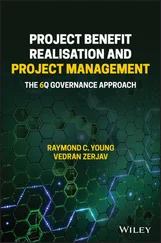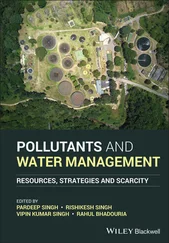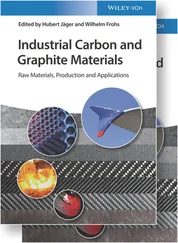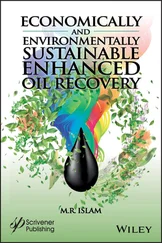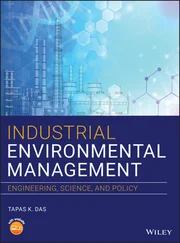275 Maucieri, C., Barbera, A. C., Vymazal, J., & Borin, M. (2017). A review on the main affecting factors of greenhouse gases emission in constructed wetlands. Agricultural and Forest Meteorology, 236, 175–193. https://doi.org/10.1016/j.agrformet.2017.01.006
276 Mayer, L. M. (1994a). Relationships between mineral surfaces and organic carbon concentrations in soils and sediments. Chemical Geology, 114(3–4), 347–363. https://doi.org/10.1016/0009‐2541(94)90063‐9
277 Mayer, L. M. (1994b). Surface area control of organic carbon accumulation in continental shelf sediments. Geochimica et Cosmochimica Acta, 58(4), 1271–1284. https://doi.org/10.1016/0016‐7037(94)90381‐6
278 McAvoy, D. C. (1988). Seasonal trends of aluminum chemistry in a second‐order Massachusetts stream. Journal of Environmental Quality, 17(4), 528–534. https://doi.org/10.2134/jeq1988.00472425001700040002x
279 McCarty, G. W., & Ritchie, J. C. (2002). Impact of soil movement on carbon sequestration in agricultural ecosystems. Environmental Pollution, 116(3), 423–430. https://doi.org/10.1016/S0269‐7491(01)00219‐6
280 McCorvie, M. R., & Lant, C. L. (1993). Drainage district formation and the loss of midwestern wetlands, 1850–1930. Agricultural History, 67(4), 13–39.
281 McLatchey, G. P., & Reddy, K. R. (1998). Regulation of organic matter decomposition and nutrient release in a wetland soil. Journal of Environmental Quality, 27(5), 1268–1274. https://doi.org/10.2134/jeq1998.00472425002700050036x
282 Mcleod, E., Chmura, G. L., Bouillon, S., Salm, R., Björk, M., Duarte, C. M., et al. (2011). A blueprint for blue carbon: Toward an improved understanding of the role of vegetated coastal habitats in sequestering CO2. Frontiers in Ecology and the Environment, 9(10), 552–560. https://doi.org/10.1890/110004
283 McNicol, G., Sturtevant, C. S., Knox, S. H., Dronova, I., Baldocchi, D. D., & Silver, W. L. (2017). Effects of seasonality, transport pathway, and spatial structure on greenhouse gas fluxes in a restored wetland. Global Change Biology, 23(7), 2768–2782. https://doi.org/10.1111/gcb.13580
284 Megonigal, J. P., & Neubauer, S. C. (2019). Biogeochemistry of tidal freshwater wetlands. In G. M. E. Perillo, E. Wolanski, D. R. Cahoon, & C. S. Hopkinson (Eds.), Coastal wetlands: An integrated ecosystem approach (2nd ed., pp. 641–683). Cambridge, MA: Elsevier. https://doi.org/10.1016/B978‐0‐444‐63893‐9.00019‐8641
285 Megonigal, J. P., & Schlesinger, W. H. (2002). Methane‐limited methanotrophy in tidal freshwater swamps. Global Biogeochemical Cycles, 16(4), 1088. https://doi.org/10.1029/2001GB001594
286 Megonigal, J. P., Whalen, S. C., Tissue, D. T., Bovard, B. D., Albert, D. B., & Allen, A. S. (1999). A plant‐soil‐atmosphere microcosm for tracing radiocarbon from photosynthesis through methanogenesis. Soil Science Society of America Journal, 63(3), 665–671. https://doi.org/10.2136/sssaj1999.03615995006300030033x
287 Megonigal, J. P., Hines, M. E., & Visscher, P. T. (2004). Anaerobic metabolism: Linkages to trace gases and aerobic metabolism. In W. H. Schlesinger (Ed.), Biogeochemistry (pp. 317–424). Oxford, United Kingdom: Elsevier‐Pergamon.
288 Mendelssohn, I. A., & Morris, J. T. (2000). Eco‐physiological controls on the productivity of Spartina alterniflora Loisel. In: M. Weinstein & D. A. Kreeger (Eds.), Concepts and controversies in tidal marsh ecology (pp. 59–80). Dordrecht, Netherlands: Kluwer Academic Publishing.
289 Mendelssohn, I. A., Kleiss, B. A., & Wakely, J. S. (1995). Factors controlling the formation of oxidized root channels: A review. Wetlands, 15(1), 37–46. https://doi.org/10.1007/BF03160678
290 Le Mer, J., & Roger, P. (2001). Production, oxidation, emission and consumption of methane by soils: A review. European Journal of Soil Biology, 37(2001), 25–50. https://doi.org/10.1016/S1164‐5563(01)01067‐6
291 Micheli, E. R., & Kirchner, J. W. (2002). Effects of wet meadow riparian vegetation on streambank erosion. 2. Measurements of vegetated bank strength and consequences for failure mechanics. Earth Surface Processes and Landforms, 27(7), 687–697. https://doi.org/10.1002/esp.340
292 Millennium Ecosystem Assessment. (2005). Ecosystems and Human Well‐Being: Wetlands and Water Synthesis. Washington D.C.: World Resources Institute.
293 Miller, W. D., Neubauer, S. C., & Anderson, I. C. (2001). Effects of sea level induced disturbances on high salt marsh metabolism. Estuaries, 24(3), 357–367. https://doi.org/10.2307/1353238
294 Mitra, S., Wassmann, R., & Vlek, P. L. G. (2005). An appraisal of global wetland area and its organic carbon stock. Current Science, 88(1), 25–35.
295 Möller, I., Kudella, M., Rupprecht, F., Spencer, T., Paul, M., Van Wesenbeeck, B. K., et al. (2014). Wave attenuation over coastal salt marshes under storm surge conditions. Nature Geoscience, 7(10), 727–731. https://doi.org/10.1038/NGEO2251
296 Monteith, D. T., Stoddard, J. L., Evans, C. D., De Wit, H. A., Forsius, M., Høgåsen, T., et al. (2007). Dissolved organic carbon trends resulting from changes in atmospheric deposition chemistry. Nature, 450(7169), 537–540. https://doi.org/10.1038/nature06316
297 Moomaw, W. R., Chmura, G. L., Davies, G. T., Finlayson, C. M., Middleton, B. A., Natali, S. M., et al. (2018). Wetlands in a changing climate: Science, policy and management. Wetlands, 38(2), 183–205. https://doi.org/10.1007/s13157‐018‐1023‐8
298 Moor, H., Rydin, H., Hylander, K., Nilsson, M. B., Lindborg, R., & Norberg, J. (2017). Towards a trait‐based ecology of wetland vegetation. Journal of Ecology, 105(6), 1623–1635. https://doi.org/10.1111/1365‐2745.12734
299 Moore, S., Evans, C. D., Page, S. E., Garnett, M. H., Jones, T. G., Freeman, C., et al. (2013). Deep instability of deforested tropical peatlands revealed by fluvial organic carbon fluxes. Nature, 493(7434), 660–663. https://doi.org/10.1038/nature11818
300 Moore, T. R., & Knowles, R. (1989). The influence of water table levels on methane and carbon dioxide emissions from peatland soils. Canadian Journal of Soil Science, 69(1), 33–38. https://doi.org/10.4141/cjss89‐004
301 Moore, T. R., Large, D., Talbot, J., Wang, M., & Riley, J. L. (2018). The stoichiometry of carbon, hydrogen, and oxygen in peat. Journal of Geophysical Research: Biogeosciences, 123(10), 3101–3110. https://doi.org/10.1029/2018JG004574
302 Morris, J. T., & Jensen, A. (1998). The carbon balance of grazed and non‐grazed Spartina alterniflora saltmarshes at Skallingen, Denmark. Journal of Ecology, 86(2), 229–242. https://doi.org/10.1046/j.1365‐2745.1998.00251.x
303 Morris, J. T., Sundareshwar, P. V, Nietch, C. T., Kjerfve, B., & Cahoon, D. R. (2002). Responses of coastal wetlands to rising sea level. Ecology, 83(10), 2869–2877. https://doi.org/10.1890/0012‐9658(2002)083[2869:ROCWTR]2.0.CO;2
304 Moseman‐Valtierra, S., Gonzalez, R., Kroeger, K. D., Tang, J., Chao, W. C., Crusius, J., et al. (2011). Short‐term nitrogen additions can shift a coastal wetland from a sink to a source of N2O. Atmospheric Environment, 45(26), 4390–4397. https://doi.org/10.1016/j.atmosenv.2011.05.046
305 Mueller, P., Hager, R. N., Meschter, J. E., Mozdzer, T. J., Langley, J. A., Jensen, K., & Megonigal, J. P. (2016). Complex invader‐ecosystem interactions and seasonality mediate the impact of non‐native Phragmites on CH4 emissions. Biological Invasions, 18(9), 2635–2647. https://doi.org/10.1007/s10530‐016‐1093‐6
306 Mueller, P., Jensen, K., & Megonigal, J. P. (2016). Plants mediate soil organic matter decomposition in response to sea level rise. Global Change Biology, 22(1), 404–414. https://doi.org/10.1111/gcb.13082
307 Muhr, J., Juliane, H., Otieno, D. O., & Borken, W. (2011). Manipulative lowering of the water table during summer does not affect CO2 emissions and uptake in a fen in Germany. Ecological Applications, 21(2), 391–401. https://doi.org/10.1890/09‐1251.1
Читать дальше
